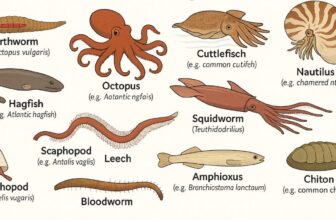Oil and gas are vital to the global economy. They serve as the primary sources of energy, powering industries, transportation, and households across the world. The countries that dominate production and export of these energy resources hold a critical influence over the global energy market. While traditional oil-producing nations like Saudi Arabia and Russia remain influential, other countries like the United States and Brazil have rapidly expanded their production capabilities, altering the dynamics of the global energy landscape.
This post will explore the 17 biggest oil and gas producing nations, examining each country’s contributions to global supply, production volumes, reserves, and challenges they face. Understanding these factors provides a clearer picture of the energy industry’s future and the geopolitical implications of energy production.
17 Oil and Gas Giants: The World’s Largest Energy Producers
1. United States
The United States has become the world’s largest oil and gas producer, overtaking Russia and Saudi Arabia in recent years. With vast oil shale reserves, the U.S. has tapped into its unconventional oil resources, particularly in the Permian Basin in Texas and New Mexico. The advent of hydraulic fracturing (fracking) has revolutionized U.S. production, making it a global energy superpower.
- Production Statistics: The U.S. produces more than 20+ million barrels of oil per day (bpd), and its natural gas production exceeds 100 billion cubic feet per day.
- Reserves: While the U.S. is not home to the world’s largest oil reserves, its technological prowess in extracting oil has allowed it to significantly increase its production output.
- Technological Advances: The U.S. leads in developing new technologies like fracking and horizontal drilling, which have made previously inaccessible resources viable.
- Challenges: Environmental concerns, fluctuating oil prices, and regulatory challenges present ongoing obstacles for the industry.
Outlook: The U.S. energy sector will continue to expand, but its future will be shaped by the global push for cleaner energy alternatives and the possibility of fluctuating oil prices.
2. Saudi Arabia
Saudi Arabia has long been a dominant player in the oil industry, holding some of the largest proven oil reserves in the world. As a member of the Organization of the Petroleum Exporting Countries (OPEC), Saudi Arabia has historically played a pivotal role in influencing global oil prices.
- Production Statistics: Saudi Arabia produces approximately 11+ million bpd, and its oil reserves are estimated to be over 260 billion barrels.
- OPEC Role: Saudi Arabia’s influence within OPEC has helped maintain oil prices through production quotas.
- Economic Diversification: Saudi Arabia’s Vision 2030 aims to reduce the country’s dependence on oil, with plans to diversify into industries like technology, tourism, and renewable energy.
- Challenges: The country’s reliance on oil revenue leaves it vulnerable to price fluctuations, while the global push for renewable energy presents future uncertainties.
Outlook: Saudi Arabia will remain a significant oil exporter, but its diversification efforts will shape the future of its energy sector.
3. Russia
Russia is one of the top producers of both oil and natural gas. Its vast reserves in Siberia and the Arctic make it a key player in global energy production, especially natural gas, where it is the largest exporter to Europe.
- Production Statistics: Russia produces around 10+ million bpd of oil and over 20 trillion cubic feet of natural gas per year.
- Reserves: Russia holds the largest natural gas reserves in the world, alongside significant oil reserves in the Siberian region.
- Global Influence: Russia’s energy resources provide leverage in its geopolitical relations, particularly with Europe and Asia.
- Challenges: Russia faces challenges from international sanctions and the ongoing push for a transition to renewable energy in Europe.
Outlook: Despite challenges, Russia will maintain its status as a leading energy producer, with a continued focus on natural gas exports.
4. Canada
Canada, known for its vast oil sands in Alberta, is one of the largest oil producers in the world. Its reserves are among the largest globally, though extracting oil from these sands is energy-intensive and environmentally challenging.
- Production Statistics: Canada produces approximately 5+ million bpd of oil and is a major natural gas producer as well.
- Reserves: The oil sands of Alberta are home to the third-largest proven oil reserves in the world, estimated at over 170 billion barrels.
- Technological Advancements: Canada’s use of steam-assisted gravity drainage (SAGD) and other techniques allows for more efficient extraction of oil from tar sands.
- Challenges: Environmental concerns, particularly around carbon emissions and pipeline projects, pose challenges for Canada’s oil industry.
Outlook: Canada will remain a key oil producer, but future growth may be constrained by environmental factors and fluctuating global oil prices.
5. China
China has historically been an oil importer, but in recent years, its production has grown significantly, making it one of the world’s largest producers of both oil and natural gas. Its role in global energy markets is expected to continue growing as demand for energy in the country remains high.
- Production Statistics: China produces around 5+ million bpd of oil and has significant natural gas reserves, contributing to its growing energy independence.
- Energy Policy: China’s state-owned energy companies, like Sinopec and CNPC, play a dominant role in domestic production, with significant investments in both conventional and unconventional oil resources.
- Challenges: The country faces environmental concerns and a growing reliance on imported oil, particularly as demand for energy increases.
Outlook: While China’s production will continue to grow, the country’s future energy strategy will focus on balancing fossil fuels with renewable energy sources.
6. Iraq
Iraq is one of the most significant oil producers in the Middle East, with some of the world’s largest reserves. It plays a critical role in global oil supply, particularly as OPEC’s second-largest producer.
- Production Statistics: Iraq produces around 4+ million bpd of oil, and its production capacity continues to grow.
- Reserves: Iraq holds approximately 145 billion barrels of oil, primarily located in the southern and northern regions of the country.
- Challenges: Political instability and regional conflicts have historically impacted oil production and infrastructure development.
Outlook: With the potential for increased production, Iraq’s oil industry faces both opportunities and challenges tied to geopolitical stability.
7. United Arab Emirates
The UAE, particularly the Emirate of Abu Dhabi, is a significant oil producer, with large reserves of both oil and natural gas.
- Production Statistics: The UAE produces about 4+ million bpd of oil and is a leading natural gas exporter.
- Reserves: The UAE has over 98 billion barrels of proven oil reserves.
- Economic Diversification: The UAE has focused on diversifying its economy, with substantial investments in renewable energy and infrastructure projects like Masdar City.
Outlook: The UAE’s oil industry will remain strong, but its transition to a more diversified economy will shape future production and consumption patterns.
8. Brazil
Brazil is the largest oil producer in South America, with significant offshore oil fields, including the pre-salt reserves in the Santos Basin.
- Production Statistics: Brazil produces over 4+ million bpd of oil, much of it from offshore fields.
- Reserves: The country’s pre-salt oil reserves have positioned Brazil as a major global oil player.
- Challenges: Environmental issues, political instability, and fluctuations in global oil prices affect Brazil’s production capacity.
Outlook: Brazil’s offshore reserves will continue to be a major source of growth, but regulatory and environmental hurdles could slow progress.
9. Iran
Iran has one of the world’s largest oil reserves, though its production has fluctuated due to international sanctions and political challenges.
- Production Statistics: Iran produces around 4+ million bpd, with substantial natural gas reserves as well.
- Reserves: Iran’s oil reserves are estimated at around 157 billion barrels, making it one of the world’s top reserves holders.
- Challenges: Political instability, international sanctions, and infrastructure issues have hampered Iran’s oil production in recent years.
Outlook: If sanctions are lifted, Iran’s oil production could surge, increasing its role in global markets.
10. Kuwait
Kuwait is a major oil producer with some of the world’s largest oil fields, including the Burgan field, which is one of the largest in the world.
- Production Statistics: Kuwait produces approximately 2.8 million bpd of oil.
- Reserves: Kuwait holds around 101 billion barrels of oil reserves.
- Challenges: Kuwait’s oil production capacity has remained relatively stable, with little growth due to OPEC production quotas.
Outlook: Kuwait will continue to be a reliable oil exporter, with steady production and plans for technological advancements in the sector.
11. Venezuela
Venezuela, once a top oil producer, has faced significant challenges in recent years due to political instability, economic mismanagement, and a sharp decline in oil production. Despite these challenges, Venezuela still holds some of the world’s largest proven oil reserves.
- Production Statistics: Venezuela’s oil production has dwindled to around 700,000 bpd, a sharp drop from its peak production of 3.5 million bpd in the late 1990s.
- Reserves: Venezuela holds the largest proven oil reserves in the world, estimated at over 250 billion barrels, primarily located in the Orinoco Belt.
- Challenges: Political turmoil, a lack of investment, and international sanctions have severely impacted Venezuela’s oil industry, leading to underproduction and a crumbling infrastructure.
Outlook: With political stability and foreign investment, Venezuela’s oil industry could experience a resurgence. However, the country’s challenges remain significant.
12. Nigeria
Nigeria is Africa’s largest oil producer, with significant offshore and onshore oil reserves. The country has a key role in the global oil market, particularly in supplying oil to the U.S. and Europe.
- Production Statistics: Nigeria produces around 2 million bpd of oil and is also a major exporter of natural gas.
- Reserves: Nigeria has proven oil reserves of approximately 36 billion barrels, with major oil fields in the Niger Delta.
- Challenges: Nigeria faces challenges from militant groups in the Niger Delta, oil theft, and political instability. Environmental concerns, particularly around oil spills, have also impacted the industry.
Outlook: Despite challenges, Nigeria remains an important oil exporter, and its production could increase if political stability improves.
13. Angola
Angola, located in Sub-Saharan Africa, has become a major player in the oil industry, primarily through its offshore oil fields. Its oil exports make up a significant portion of its GDP.
- Production Statistics: Angola produces around 1.5 million bpd of oil and is a growing natural gas producer.
- Reserves: Angola’s oil reserves are estimated at around 9 billion barrels, with a large portion of its production coming from offshore fields in the Atlantic Ocean.
- Challenges: Angola’s oil industry faces issues related to fluctuating global oil prices, aging oil fields, and political corruption.
Outlook: Angola will continue to play a significant role in Africa’s oil production, but efforts to diversify the economy away from oil are necessary for long-term growth.
14. Norway
Norway has established itself as one of Europe’s top oil and gas producers, with a strong focus on offshore oil fields in the North Sea. Norway’s energy industry is known for its technological advancements and sustainability efforts.
- Production Statistics: Norway produces around 2 million bpd of oil and is one of the largest natural gas producers in Europe, with daily production of over 9 billion cubic feet of gas.
- Reserves: Norway’s proven oil reserves are estimated at approximately 8 billion barrels, with the majority located in offshore fields in the North Sea.
- Sustainability Efforts: Norway has been a leader in integrating renewable energy into its energy mix, with large investments in offshore wind farms and carbon capture and storage technologies.
Outlook: While Norway’s oil production may decline in the coming decades due to the depletion of offshore fields, its focus on sustainability and renewable energy will position it as a leader in clean energy technology.
15. Qatar
Qatar is one of the world’s leading natural gas producers, with vast reserves and significant exports of liquefied natural gas (LNG). Though its oil production is relatively small compared to others, Qatar’s dominance in the natural gas market gives it considerable influence.
- Production Statistics: Qatar produces around 600,000 bpd of oil and is the world’s largest exporter of LNG, with production surpassing 10 million tons per year.
- Reserves: Qatar’s oil reserves are around 25 billion barrels, but it is primarily known for its massive natural gas reserves, especially in the North Field, the largest single gas field in the world.
- Energy Strategy: Qatar has focused on natural gas as its main energy export, making it a key player in the global LNG market.
Outlook: Qatar’s future is increasingly tied to natural gas production, and its investments in LNG infrastructure will continue to ensure its position as a global energy leader.
16. Algeria
Algeria is a significant oil and gas producer in North Africa, with considerable reserves and a strategic location in the Mediterranean. The country’s oil and gas industry plays a critical role in its economy, though it faces challenges from declining oil prices and geopolitical instability.
- Production Statistics: Algeria produces about 1 million bpd of oil and is a major producer of natural gas, with a daily production rate of around 8 billion cubic feet.
- Reserves: Algeria has proven oil reserves of approximately 12 billion barrels and significant natural gas reserves, particularly in the Sahara Desert.
- Challenges: The Algerian oil and gas sector faces aging infrastructure, political instability, and competition from other energy producers.
Outlook: Algeria’s oil and gas sector will remain important to its economy, but it will need to address infrastructure issues and diversify its energy sources for long-term growth.
17. Malaysia
Malaysia has become an increasingly important oil and gas producer in Southeast Asia, with significant offshore reserves in the South China Sea and the Malay Basin. The country’s energy industry is diverse, with both oil and natural gas contributing to its energy mix.
- Production Statistics: Malaysia produces around 600,000 bpd of oil and is also a significant producer of natural gas.
- Reserves: Malaysia’s oil reserves are estimated at around 3.5 billion barrels, and it has significant natural gas reserves, particularly in offshore fields.
- Energy Policy: Malaysia has pursued an energy diversification strategy, with investments in renewable energy and energy efficiency technologies.
Outlook: Malaysia’s energy industry will continue to play a key role in the region’s oil and gas markets, but its future will depend on continued investments in both conventional and renewable energy sources.
Closing Thoughts
The global oil and gas market is highly influenced by these 17 nations, each playing a unique role in shaping the future of energy production and consumption. The top producers, from the United States and Saudi Arabia to Qatar and Malaysia, have a significant impact on supply, price volatility, and energy security. While oil remains a dominant source of energy, these countries are increasingly looking to diversify their energy portfolios, address environmental concerns, and invest in renewable energy technologies.
As the world transitions to cleaner energy sources, these countries will face new challenges, but also opportunities to innovate and adapt. The balance between fossil fuel production and renewable energy will be crucial for shaping the future energy landscape, and these nations will continue to lead the way in both traditional and emerging energy sectors.
Sources:
- International Energy Agency (IEA):
- Website: https://www.iea.org/
- The IEA provides detailed global energy statistics, including oil and gas production, reserves, and consumption data.
- U.S. Energy Information Administration (EIA):
- Website: https://www.eia.gov/
- The EIA is an authoritative source for U.S. and global energy data, including oil and gas production and reserves, energy trends, and forecasts.
- Organization of the Petroleum Exporting Countries (OPEC):
- Website: https://www.opec.org/
- OPEC publishes annual reports, statistical bulletins, and outlooks on oil production, reserves, and market dynamics.
- World Bank:
- Website: https://www.worldbank.org/
- The World Bank provides global energy data and economic reports that include information on oil and gas production and energy access.
- BP Statistical Review of World Energy:
- Website: https://www.bp.com/en/global/corporate/energy-economics/statistical-review-of-world-energy.html
- BP publishes an annual review providing key statistics on global energy markets, including oil and gas production, consumption, and reserves.
These sources are updated regularly, so it’s always a good idea to check their latest publications for the most accurate and current data.





